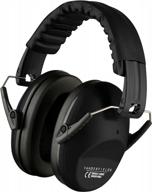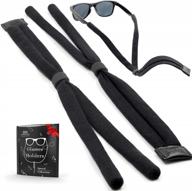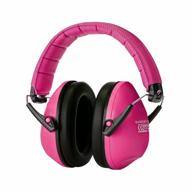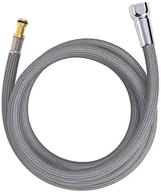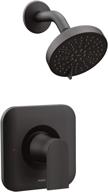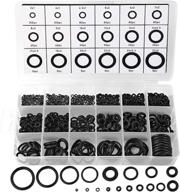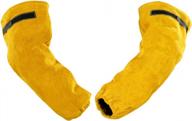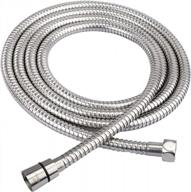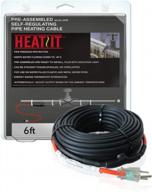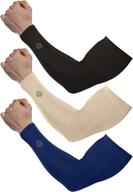Troubles With Clogged Drains? We Have The Solutions
Dealing with a clogged drain can be incredibly frustrating. Drains that are slow-flowing or completely blocked can cause water to back up and create nasty messes. Fortunately, with the right tools and techniques, you can unclog drains yourself without calling a plumber.
Top products in 🧹 Drain Cleaning Equipment
Common Causes of Clogged Drains
There are several common culprits when it comes to drain clogs:
- Hair, soap scum, and other debris - This buildup occurs over time and can slowly narrow pipes.
- Grease and oil - Grease poured down the drain solidifies and sticks to pipe walls.
- Tree roots - Roots can grow into drain lines through cracks and joints.
- Toys, sanitary products, and other objects - Things that get flushed or poured down the drain that don't break down can get stuck.
Types of Drain Clogs
Clogs can occur in several places:
- Main sewer line clogs - These affect the main line from your home to the sewer system.
- Kitchen sink clogs - Most often caused by grease and food debris.
- Bathroom sink clogs - Hair, toothpaste, and more build up over time.
- Shower and tub clogs - Hair and soap scum are common culprits.
- Toilet clogs - Can be caused by too much toilet paper, sanitary products, and more.
Handheld Drain Cleaning Tools
For minor clogs, a handheld drain snake is often the go-to tool. Insert the flexible metal coil into the drain and twist to break up and hook debris. For bathroom sink drains, a small diameter snake that fits deeply into the curved pipe is best.
Another interesting products
Power Drain Augers
For tougher clogs deeper in the drain line, a mechanical drain auger is more effective. Feed the motorized auger into the pipe and allow the rotating metal coil to bore through and pull out the clog. Electric variants plug into a standard outlet while gasoline powered models provide more torque for outdoor drain lines.
High Pressure Drain Cleaners
| Type | Description |
|---|---|
| Air Burst Drain Cleaners | Use compressed air to break up and dislodge clogs. |
| Water Jet Drain Cleaners | Emit a high-pressure stream of water to scrub pipe walls. |
Chemical Drain Cleaners
For light clogs, a commercial chemical drain cleaner or homemade baking soda/vinegar treatment can break up some blockages without damaging pipes. However, they aren't as effective on severe clogs.
Tips for Preventing Future Clogs
- Use drain covers and screens to catch hair and debris.
- Don't pour fats or harsh chemicals down drains.
- Install sediment traps to keep debris from washing down drains.
- Use a small amount of enzyme cleaner monthly to break down buildup.
- Have drains professionally cleaned periodically.
Dealing with stopped up drains is never fun, but arming yourself with the right equipment and techniques can make the process easier. With regular maintenance and immediate attention when clogs occur, you can keep your drains free-flowing.
Types of Drain Clogs and Their Causes
Clogged drains can occur anywhere in your home's plumbing system. Knowing the specific types of clogs and what causes them can help you address the issue quickly and efficiently.
Main Sewer Line Clogs
A main sewer line clog will affect the entire drainage system for your home. Common causes include:
- Tree roots growing into the sewer line through cracks
- Collapsed or broken pipes
- Buildup of grease, waste, and debris over time
Kitchen Sink Clogs
Kitchen sink clogs are often caused by:
- Food particles like grease, bones, and coffee grounds going down the drain
- Accumulated waste from dishes, pots, and pans
- Buildup of hair, soap, and grime
Similar products
Bathroom Sink Clogs
Bathroom sink clogs commonly result from:
- Hair getting caught in the drain
- Toothpaste, makeup, and other bathroom products building up
- Soap scum accumulating in pipes
Shower and Tub Clogs
Shower and tub drains often get clogged with:
- Hair and soap scum
- Shampoo, conditioner, and body wash residue
- Dead skin cells and dirt
- Razors, toys, and other foreign objects falling down the drain
Toilet Clogs
Toilets can become clogged by:
- Too much toilet paper
- Flushable wipes and other items that don't break down
- Toys and other objects being flushed
- A buildup of waste and paper over time
Knowing the type of clog you're dealing with and what causes it will allow you to use the proper tools and techniques to clear the blockage quickly.
Drain Snakes and Augers - How They Work to Clear Clogs
Drain snakes and augers are effective tools for clearing out blocked drains. They work by physically snaking through the pipes to reach, grab, and pull out debris.
Drain Snakes
Drain snakes, also called plumber's snakes, are long flexible steel cable coils that can be inserted into drains to reach clogs. They come in different sizes:
- Small handheld snakes - For sinks, tubs, and showers
- Larger drum snakes - For main lines and sewers
- Powered electric snakes - Rotate to bore through debris
To use a plumber's snake:
- Slowly feed the snake into the drain opening.
- When you hit the clog, twist the snake to work through the debris.
- Once the snake makes it past the clog, retract it to pull out the material.
- Repeat as needed until water can flow freely.
Drain Augers
A drain auger (sometimes called a plumber's snake) features a coil that is rotated by a crank or motor. As it rotates, the end of the auger bores through the clog, grabbing debris and pulling it out. Types of augers include:
- Hand crank augers - For sinks and tubs
- Drill powered augers - Attach to a drill for added power
- Electric augers - Rotates coil via electric motor
To use a drain auger:
- Feed the auger down the drain and penetrate the clog.
- Crank the handle or turn on the drill or motor.
- Rotate for 10-15 seconds, then pull out debris.
- Repeat as needed until drain is clear.
Snakes and augers can reach deep into drain lines to clear even tough clogs. With proper use, they can remove blockages and get your drains flowing freely again.
Chemical Drain Cleaners - Pros and Cons
Chemical drain cleaners can quickly dissolve clogs and get your drains flowing again. However, they also come with some drawbacks to consider before using.
Pros of Chemical Drain Cleaners
- Fast-acting formula gets to work dissolving clogs right away
- Available at any hardware store or supermarket
- Easy to use - simply pour down drain
- Helpful for light grease, hair, soap scum, and food clogs
- Relatively inexpensive compared to a plumber
Cons of Chemical Drain Cleaners
- Can be harsh on pipes if overused
- Not as effective on severe blockages
- Potential environmental impact of chemicals washed down drains
- Can cause injuries if splashed on skin or in eyes
- Unpleasant fumes while product is working
Types of Chemical Drain Cleaners
There are several categories of chemical drain cleaners:
- Caustic soda (lye) - Dissolves organics like hair but can damage pipes
- Sulfuric acid - Powerful on inorganic mater but very hazardous
- Detergents - Used in many commercial drain cleaners
- Enzymatic cleaners - Safer for pipes but slower-acting
Tips for Using Chemical Drain Cleaners
Follow these tips to use chemical drain cleaners safely and effectively:
- Start with boiling water to try flushing the clog first
- Wear gloves and eye protection when handling cleaner
- Follow product instructions carefully
- Allow product to work for specified amount of time
- Never mix chemical drain cleaners together
- Rinse pipes thoroughly with water after use
- Ventilate area to avoid breathing fumes
Overall, chemical drain cleaners can quickly clear minor clogs. But for severe or recurring blockages, calling a plumber to physically remove the clog may be the better solution.
Preventing Future Clogs
Clogged drains can be a nuisance. Rather than repeatedly using drain cleaners and snakes to clear them, implementing some simple preventative measures can help stop clogs before they happen.
Install Drain Screens
Adding drain screens or strainers over sink, shower, and tub drains prevents hair and debris from accumulating down the pipe. Just be sure to clean them regularly. For example, cleaning hair and soap scum from your tub drain screen weekly can prevent major slowdowns.
Mind What Goes Down Drains
Avoid pouring fats, oils, and grease down kitchen sinks. Over time, they coat pipes and attract other gunk. Compost food scraps instead. And never flush non-dissolvable items like wipes or dental floss that can get stuck.
Use a Drain Protector
For sinks prone to hair clogs, using an in-sink drain protector such as the TubShroom can prevent strands from making their way down pipes. The mushroom shape sits in the drain and collects shedding hair before the water goes down.
Perform Routine Maintenance
- Pour a kettle of boiling water down drains weekly to melt built-up grease.
- Use a plunger regularly to loosen debris and keep water flowing.
- Try an enzyme cleaner monthly to safely break down organics.
- Have a professional drain cleaning annually to keep pipes clear.
Check for Leaks
Slow drips into drains allow grease, soap film, and minerals from water to continually build up. Fix any leaks right away to prevent clogs.
With some diligence, you can stop drain clogs before they become a nuisance. Implementing preventive maintenance along with drain screens and protectors will allow drains to flow freely.
What is the Benefit of Amazon Prime for Drain Cleaning Equipment?
Purchasing drain cleaning tools and supplies through Amazon Prime provides several advantages compared to other online and brick-and-mortar retailers.
Free Two-Day Shipping
Amazon Prime offers free two-day shipping on hundreds of thousands of items, including most drain augers, plumber's snakes, chemical drain cleaners and other equipment. This provides faster fulfillment so you can get your clog-busting tools delivered quickly.
Free One-Day and Same-Day Delivery
For certain ZIP codes, Amazon Prime provides free one-day or same-day delivery on qualifying orders over $35. This is ideal when you have an urgent clogged drain and need supplies ASAP.
Free Returns
Amazon Prime members get free returns on most items. If a drain cleaning product you purchased doesn't solve the clog or you simply decide you don't need it, you can easily send it back at no additional cost.
Amazon Prime Try Before You Buy
Select drain cleaning equipment may be eligible for Prime Try Before You Buy. This allows you to test out products for a week for free before purchasing to make sure they work for your needs.
Prime Member Pricing
Some daily essentials and popular items have special pricing exclusively for Prime members. You may save a few extra dollars on drain care products or receive additional discounts.
Overall, being an Amazon Prime member can provide convenience, faster shipping, hassle-free returns, and savings when purchasing equipment to clear clogged drains and keep pipes flowing freely.
What Are The Different Types Of Drain Cleaning Equipment?
There are several types of drain cleaning equipment available in the market. Here are some of the most common types:
- Mechanical drain cleaning machines: These are also known as cable machines or drain augers. They are the oldest type of drain and sewer cleaning technology. They use a flexible coil spring or flat metal tape to clear out drain obstructions and clogs. These machines were manually powered, often with a hand crank used to rotate the drain cable. As time went on, motors were added to make the task less labor-intensive.
- Sectional cable machines: These machines work by coupling sections of cable, typically of 7 1⁄2-foot or 15-foot lengths, together one at a time and feeding them down a pipe to scour the inside as they spin. This allows a user to take only the necessary amount of cable to a job site. Sectional machines also have a smaller profile than other drain cleaning machines that service similar size pipes.
- Continuous cable machines: These machines are also known as drum machines. They are used in residential and light commercial applications. Most professional sewer and drain cleaners use continuous cable machines. They are effective at clearing scale, grease, sludge, and soft blockages.
- High-speed drain cleaning machines: These machines thrive on speed, not torque. They clear drain lines wall to wall with the use of specialty chain knockers and allow for a camera to be in-pipe simultaneously. They are effective at clearing scale, grease, sludge, and soft blockages.
- Jetters: These machines use high-pressure water streams to break up clogs. The technician feeds a hosepipe fitted with a nozzle into the drain. High-pressure water pumped into the hose is forced out through the nozzle. With pressures as high as 35,000 psi, the energy from the water is effective in clearing blockages.
- Auger cleaners: There are two different types of auger or snake cleaners – hand-powered and motor-driven. Both types use a long, flexible cable that the user feeds through the drain opening to the clog. A corkscrew on the end of the cable cuts into the clog to break it up or to allow it to be extracted. One of the major advantages of this equipment is the ability to physically remove blockages that chemical cleaners cannot dissolve or break up.
What Are The Pros And Cons Of Jetters For Drain Cleaning?
Pros:
Cons:
Overall, hydro-jetting is an effective and environmentally friendly method of clearing drain and sewer lines of obstructions and clogs. However, it may not be suitable for all types of drain cleaning situations, and it can be more expensive than other methods. It is important to consult with a professional plumber to determine if hydro-jetting is the best option for your specific situation.







